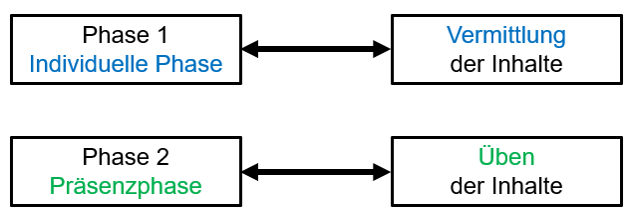Use of Reading Logs in the Flipped Classroom.
DOI:
https://doi.org/10.25369/ll.v3i1.67Keywords:
Inverted Classroom, Just-In-Time Teaching, Reading Logs, Learning Assessment JournalAbstract
For a successful implementation of the inverted classroom format, it is important that students come to the classroom sessions well prepared. This includes, above all, a reflective engagement with the content and materials to be prepared. To support this process, we have tested the use of Reading Logs, sometimes referred to as Learning Assessment Journals, in several courses. The Reading Logs are designed to guide students to reflective engagement with the new content by asking leading questions. This, combined with ideas of Just-In-Time Teaching, has led to much more effective use of face-to-face time. An evaluation in two courses of the physics teaching degree program also showed that the students were significantly more motivated and satisfied despite the (supposed) additional work.
Downloads
References
D.K. Apple, S. Caroll, S. Beyerlein: The Learning Assessment Journal as a Tool for Structured Reflection in Process Education (1996) https://doi.org/10.1109/FIE.1996.569969
D. MacIsaac, D. Abbott, K. Falconer, D. Henry: Promoting physics student reflection via Reading Logs and Learning Commentaries. http://physicsed.buffalostate.edu/pubs/AAPTmtgs/
D. Abrams: Evaluation des Einsatzes von Reading Logs als Methode des Inverted Classroom, Masterarbeit, Universität zu Köln (2021)
A.M. Schäfer: Das Inverted Classroom Model. In J. Handke, A. Sperl, & Deutsche ICM-Konferenz (Hrsg.), Das inverted classroom model: Begleitband zur ersten deutschen ICM-Konferenz (S. 3-11). Oldenbourg (2012)
K. Zickwolf, S. Kauffeld: Inverted Classroom. In S. Kauffeld & J. Othmer (Hrsg.), Handbuch innovative Lehre (S. 45-51). Springer (2019) https://doi.org/10.1007/978-3-658-22797-5_2
K. Morisse: Inverted Classroom in der Hochschullehre - Chancen, Hemmnisse und Erfolgsfaktoren. In J. Handke, A. Sperl, & Deutsche ICM-Konferenz (Hrsg.), Das inverted classroom model: Begleitband zur ersten deutschen ICM-Konferenz (S. 17-28). Oldenbourg (2012)
A. Sams: Der "Flipped" Classroom. In J. Handke & A. Sperl (Hrsg.), & J. Handke (Übers.), Das inverted classroom model: Begleitband zur ersten deutschen ICM-Konferenz (S. 13-23). Oldenbourg (2012) https://doi.org/10.1515/9783486716641-005
R. Kellner, S. Stanzel: Vorher lesen statt vorgelesen. Physik Journal 21(7), 35 (2022)
P. Mayring,: Qualitative Inhaltsanalyse: Grundlagen und Techniken (12., überarb. Aufl). Beltz. (2015)
E.L. Deci, R.M. Ryan: Die Selbstbestimmungstheorie der Motivation und ihre Bedeutung für die Pädagogik. S. 223-238 (1993)


